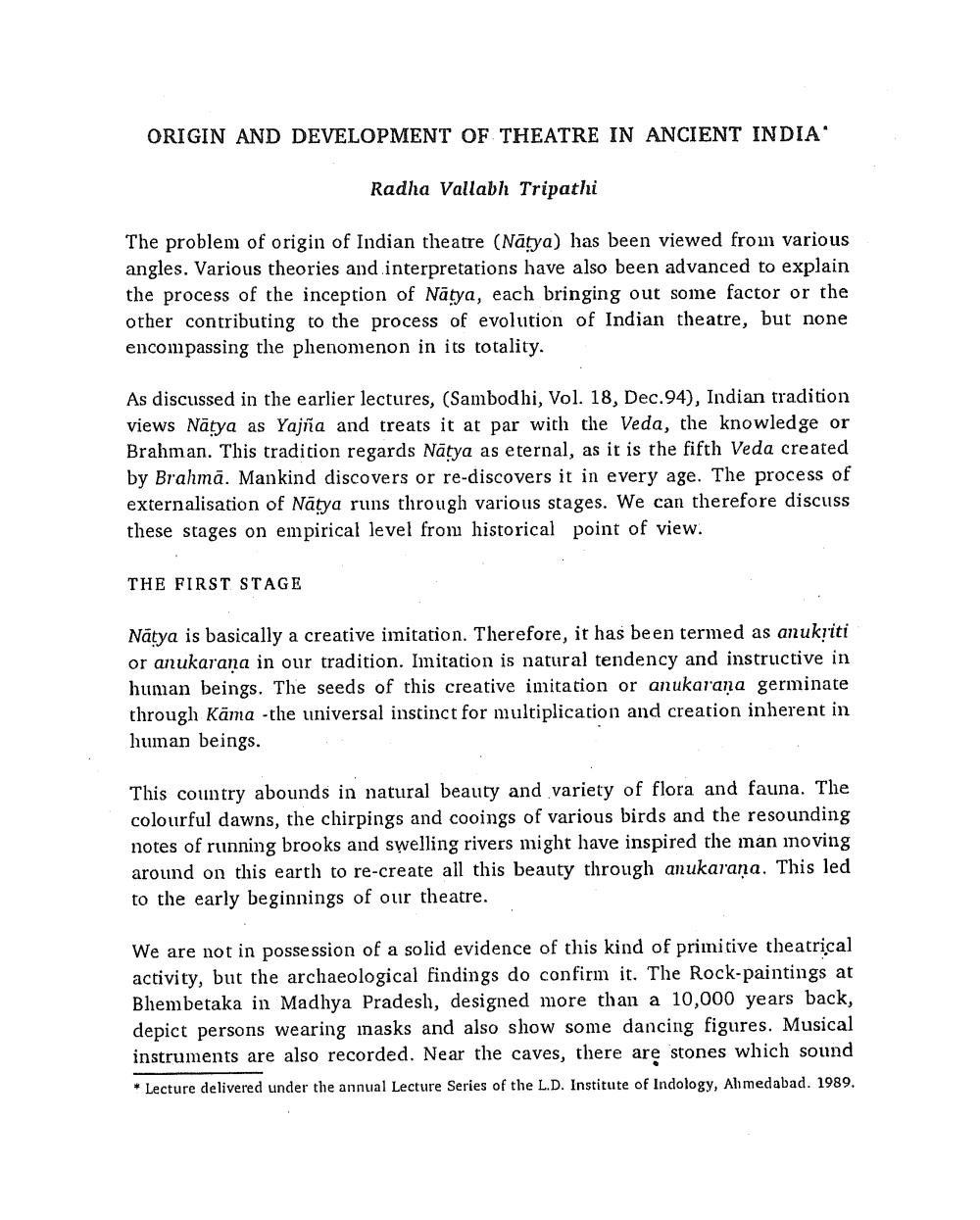Book Title: Sambodhi 1994 Vol 19 Author(s): Jitendra B Shah, N M Kansara Publisher: L D Indology Ahmedabad View full book textPage 5
________________ ORIGIN AND DEVELOPMENT OF THEATRE IN ANCIENT INDIA' Radha Vallabh Tripathi The problem of origin of Indian theatre (Natya) has been viewed from various angles. Various theories and interpretations have also been advanced to explain the process of the inception of Natya, each bringing out some factor or the other contributing to the process of evolution of Indian theatre, but none encompassing the phenomenon in its totality. As discussed in the earlier lectures, (Sambodhi, Vol. 18, Dec.94), Indian tradition. views Natya as Yajia and treats it at par with the Veda, the knowledge or Brahman. This tradition regards Natya as eternal, as it is the fifth Veda created by Brahma. Mankind discovers or re-discovers it in every age. The process of externalisation of Natya runs through various stages. We can therefore discuss. these stages on empirical level from historical point of view. THE FIRST STAGE Natya is basically a creative imitation. Therefore, it has been termed as anukriti or anukarana in our tradition. Imitation is natural tendency and instructive in human beings. The seeds of this creative imitation or anukarana germinate through Käma the universal instinct for multiplication and creation inherent in human beings. This country abounds in natural beauty and variety of flora and fauna. The colourful dawns, the chirpings and cooings of various birds and the resounding notes of running brooks and swelling rivers might have inspired the man moving around on this earth to re-create all this beauty through anukarana. This led. to the early beginnings of our theatre. We are not in possession of a solid evidence of this kind of primitive theatrical activity, but the archaeological findings do confirm it. The Rock-paintings at Bhembetaka in Madhya Pradesh, designed more than a 10,000 years back, depict persons wearing masks and also show some dancing figures. Musical instruments are also recorded. Near the caves, there are stones which sound * Lecture delivered under the annual Lecture Series of the L.D. Institute of Indology, Ahmedabad. 1989.Page Navigation
1 ... 3 4 5 6 7 8 9 10 11 12 13 14 15 16 17 18 19 20 21 22 23 24 25 26 27 28 29 30 31 32 33 34 35 36 37 38 39 40 41 42 43 44 45 46 47 48 49 50 51 52 ... 182
